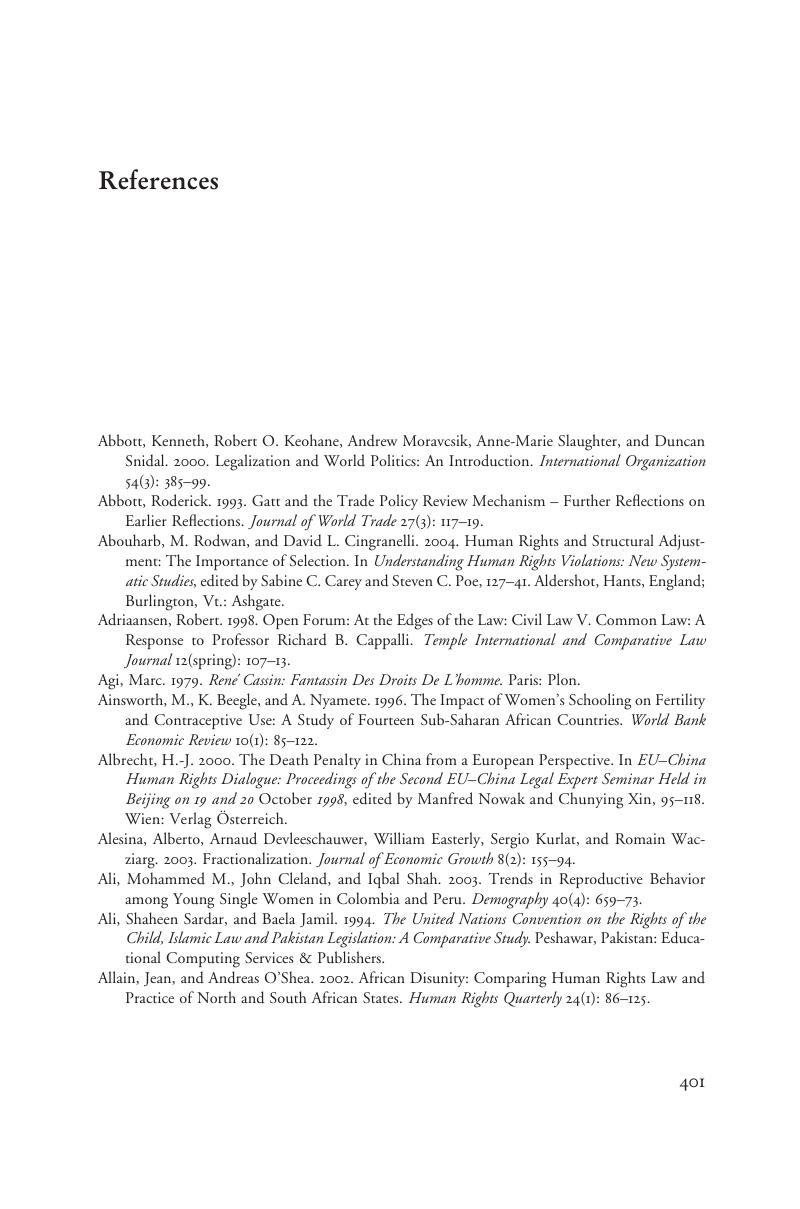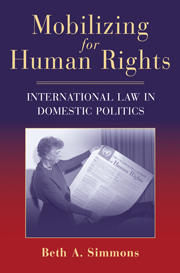References
Published online by Cambridge University Press: 05 June 2012
Summary

- Type
- Chapter
- Information
- Mobilizing for Human RightsInternational Law in Domestic Politics, pp. 401 - 442Publisher: Cambridge University PressPrint publication year: 2009



